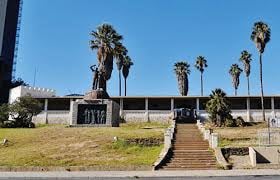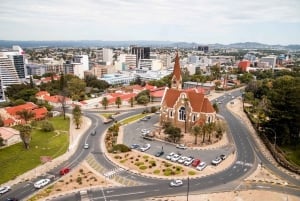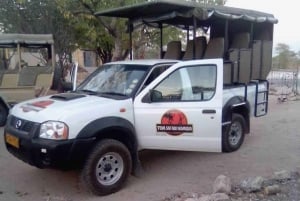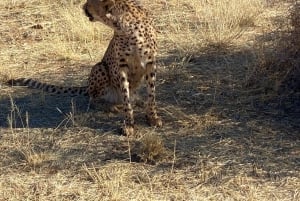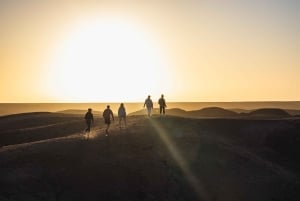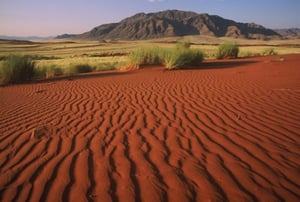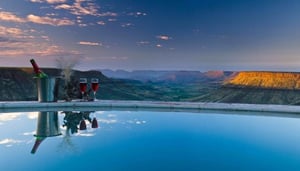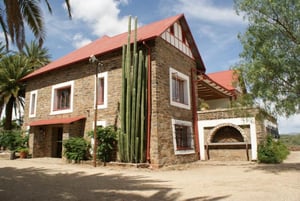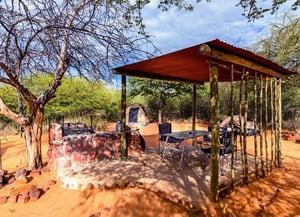Alte Feste
Alte Feste: A Historic Landmark in Windhoek, Namibia
Book Top Experiences and Tours in Namibia:
If youʻre booking your trip to Namibia last minute, we have you covered. Below are some of the top tours and experiences!- Windhoek: City and Township Tour
- Swakopmund: Desert Dunes Quad Biking with Optional Sandboard
- Etosha National Park: Full or Half-Day Game Drive
- Walvis Bay: Sandwich Harbour Sunset Tour
- Windhoek : Cheetah walk Experience
The Alte Feste was built in 1890 by the German colonial administration under Rheinische Mission. The fortress was intended to serve as a military outpost, helping the German settlers control and monitor the surrounding area. Windhoek, at the time, was a small settlement surrounded by vast Namibian terrain, and the German colonial forces saw the Alte Feste as a strategic location for defending the area and solidifying their influence in the region.
The structure of the Alte Feste is an example of classic colonial architecture, designed to be both a fortress and an administrative center. It was made from stone and built on a hilltop, offering a commanding view of the surrounding landscape. The building's architecture features large, thick walls, high windows, and a sturdy design, typical of the military fortifications of the era. Over time, the Alte Feste became a key element in the expansion of German colonial rule in the area.
The building was used for various purposes over the years. After its time as a military fortress, it became the seat of the colonial administration. Later, in the years following Namibia’s independence in 1990, the Alte Feste was repurposed as a museum, marking the significant shift from colonial rule to the modern-day nation-state of Namibia.
Architectural Significance
The Alte Feste remains one of the finest examples of colonial architecture in Namibia. Its design reflects the influence of German military and administrative styles of the late 19th century. The use of stone, large archways, and the fort-like structure reflects the importance of defense and control during the colonial era.
The design also features elements common in military buildings of the time, such as battlements, a central courtyard, and large, fortified doors. While much of the original building has been preserved, there have been some additions and modifications to suit its modern-day use as a museum. The building stands proudly as a testament to the era of colonialism in Namibia and offers visitors a chance to step back in time to understand how the country was shaped by its past.
The Museum and its Exhibitions
Today, the Alte Feste is home to the National Museum of Namibia, which houses a wide range of exhibits showcasing Namibia’s cultural, geological, and historical heritage. Visitors can explore artifacts that tell the story of Namibia’s indigenous communities, colonial history, and the country’s struggle for independence.
Colonial History Exhibits
The museum’s collection includes a number of artifacts and documents that delve into Namibia’s colonial past under German and later South African rule. These exhibits explore the impact of colonization on Namibia’s indigenous peoples, focusing on the exploitation of resources, the spread of European culture, and the harsh treatment faced by the indigenous population during the German colonial period.
Namibia’s Independence
The museum also includes exhibits dedicated to Namibia’s struggle for independence. These collections highlight the efforts of Namibian liberation movements, such as the South West Africa People’s Organization (SWAPO), which played a significant role in Namibia's long journey to freedom. The Namibian War of Independence is also chronicled through documents, photographs, and multimedia presentations that offer insight into the country’s challenges during this time.
Cultural and Traditional Exhibits
In addition to its historical exhibitions, the Alte Feste also celebrates Namibia’s rich cultural diversity. The museum showcases artifacts from the various ethnic groups that inhabit the country, including the Herero, Himba, Damara, and Khoisan peoples. Traditional clothing, jewelry, musical instruments, and artwork offer a glimpse into the lives of Namibia’s indigenous communities and their unique cultural practices.
Geological and Natural Exhibits
The museum also offers exhibits on Namibia's natural history, highlighting the country’s diverse ecosystems, from the Namib Desert to the lush Kavango region. Visitors can learn about Namibia’s geological features, including its famous dunes, desert landscapes, and the Okavango River, as well as the country’s remarkable wildlife, such as elephants, lions, and cheetahs.
The Alte Feste and its Role in Modern Namibia
The Alte Feste’s role in Namibia’s history is crucial not only as a symbol of the colonial era but also as a place of reflection on the country’s journey from oppression to independence. After Namibia gained independence in 1990, the museum became an important site for national reconciliation and education. It serves as a place where Namibians and visitors from around the world can come together to reflect on the nation's struggles and achievements.
The museum also plays a role in cultural preservation. By showcasing Namibia's traditional art and history, the Alte Feste ensures that the country’s diverse cultural heritage is protected and celebrated for future generations. It acts as a bridge between the past and the future, offering visitors a chance to understand how Namibia’s history has shaped its present identity.
A Visit to Alte Feste
For anyone visiting Windhoek, the Alte Feste is a must-see destination. Located in the city center, it is easily accessible and offers a comprehensive look at the history of Namibia. Whether you are a history buff, an architecture enthusiast, or simply curious about Namibia’s past, the Alte Feste offers a wealth of information and a unique opportunity to explore the country’s colonial history, cultural diversity, and independence struggle.
Visitors can take a guided tour of the museum or explore the exhibits on their own. The museum is also home to a souvenir shop, where visitors can purchase traditional Namibian crafts, books, and souvenirs that celebrate the country's heritage. The Alte Feste is open year-round and offers a chance to step back in time and explore Namibia’s fascinating story from colonial times to the present.
Conclusion
The Alte Feste stands as one of Namibia’s most important historical landmarks, offering a powerful glimpse into the country’s complex and often painful past. From its early days as a colonial fortress to its current role as a museum of national significance, the Alte Feste has witnessed the transformation of Namibia from a German colony to an independent nation. As a museum, it serves as both a reminder of the past and a celebration of Namibia’s rich cultural heritage. For anyone interested in understanding Namibia’s history, the Alte Feste is a place that should not be missed.


